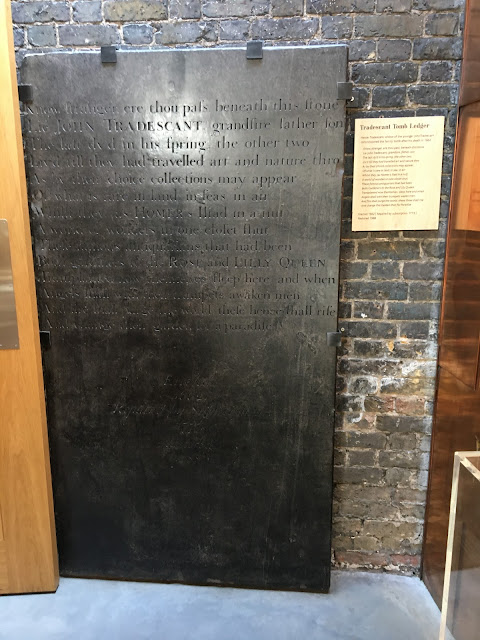Apologies for the tardiness of this post. We are still in the midst of family illness.
Introduction
I feel I should have done some research before going to this exhibition, which is a collaboration between the Metropolitan Museum in New York and The National Gallery in London. It would certainly have helped, for although filled with beautiful and lustrous images, this is a hard exhibition to take in. As I said to a friend later that day over lunch, there is a limit to the number of panel paintings one can take in at one sitting, and I write as somebody who usually loves this sort of thing, but something, for me at least, was not quite right.
'The Art that shaped the Future': Art History in the Age of Stupid?
For the ignorant, and I think I may include myself in that category, Sienese art of the Middle Ages being a bit esoteric, both galleries have produced introductory videos to the exhibition.
The Met video features the James Pope-Hennessy Curator in Charge of European Painting, Stephan Wolohojian and Caroline Campbell, then Curator of Italian Art at the National Gallery. At one point Wolohijan said: '[....] in the last years of the 1340s Europe is infested by the Black Death, this great plague that was especially present in Italy, so by the end of our story none of these artists survive." The implication being they had all died of the plague. This is nonsense. Of the four artists that this exhibition focuses upon, Ambrogio Lorenzetti and his brother Pietro may indeed have died of plague, but Duccio died c1318 and Simone Martini died in Avignon in 1344 at the age of 60. Towards the end of the video Wolohojian stands in front of the beautiful 'Christ Discovered in the Temple' by Simone Martini with its delicate cusped & subcusped Gothic arch and lilting Gothic folds in the clothing of the three figures and says: "No gable, no Gothic form, a truly kind of framed painting, the way you could see made today...." Why do people make such statements like that, when, in this particular context, the exhibition is filled from beginning to end with panel paintings in square frames without 'no gable, or Gothic form'?
The National Gallery video, grandiloquently subtitled 'The Art that shaped the Future', features, amongst others, a local Sienese artist Chiara Perinetti Casoni, who has it appears a real downer on Byzantine art. (I hate how in order to re-enforce an argument it is done at the expense of something else.) She seems to speaking from a place of ignorance and one perhaps tainted by a certain anti-clericalism. In common with the other talking heads she presents a view of Byzantine art that is crude and almost unrecognisable. She implied, for instance, that Byzantine icons were produced solely by religious ie monks. However, icons were created both in a monastic and secular milieu. There were professional secular artists in the Empire creating icons in a workshop system that couldn't have been that different from the one operating in Siena. Too much Vasari, and too much Romanticism. Certainly this whole exhibition is indebted to Georgio Vasari and his book 'The Lives of the Most Excellent Artists, Sculptors, and Architects' .
A claim is made in both videos that the icon tradition is 'rigid', 'rote and stale' and yet icons developed over time just like any other pictorial art, for example the introduction of Chrysography or 'striations'. Contrary to the impression given, the depiction of the Virgin & Child in Orthodox iconography is not tied to the 'Hodegetria' type, which, according to legend, was established by St Luke the Evangelist. There are other ways depicting the Theotokos and Child eg. 'Panakranta', 'Pelagonitissa' and most importantly in this context the 'Eleusa'. According to Wiki it is sometimes referred to the in the West as the 'Virgin of Tenderness'. Perhaps the most famous example of this type is the Vladimirskaya which dates from c 1130. So claims that the it was the artists of Siena - 'true artists', mind you - those men, 'whose blood boiled' and 'felt strong emotions' who introduced tenderness & emotion into the dead language of Byzantium have to be taken with a pinch of salt. Italian artists before Duccio were producing art with emotion; for example there is the work of the Florentine artist Meliore di Jacopo (fl 1255-85). Two of his paintings spring to mind: The Madonna and Child with Two Angels, c 1270-75, and The Enthroned Madonna and Child of the same period.
But then, sadly, although this exhibition opens movingly with a room of icons from the city, it underplays the role of those images in the religious and civic life of the contemporaneous Italian city: there were, for example, processions of icons in Rome and in the cities of Lazio to the south, and in Siena itself, where in addition the cathedral and San Niccolo al Carmine possessed miracle-working icons of the Virgin Mary. In researching for this post I soon realised that I knew very little about the cultural spread of Byzantine art in Northern Italy. The presence of Byzantine culture in Venice I understood, and in southern Italy and Sicily too where there were then still Greek speaking communities worshipping according the Byzantine rite.
What, however, was worse about these productions is that virtually no speaker in either video could bring themselves to say 'Byzantine', 'Gothic' or 'International Gothic'. And these are the categories, the concepts, after all, that exhibition is dealing with.
You know, looking at these videos I felt just that bit cheated - I mean, all this people educated - lengthily, expensively, exclusively - talking with all the inanity of a fashion journalist. PR rules.





















































